
Enjoy the spectacular awakening of nature by following one of the many itineraries in the Alta Valsesia Natural Park in the heart of Monte Rosa.
Created in 1975 to safeguard biodiversity, it is the highest natural park in Europe because it stretches up to the 4554 m of Punta Gnifetti, a well-known peak because the Capanna Regina Margherita stands there.
Today we have chosen to tell you about a path suitable for families and walkers who do not want to walk too much but who have curiosity and a desire to discover.
The Glaciological Path no. 206 and then 210 is perfect for a weekend in spring.
Departure from the Acqua Bianca square.
Arrival at the 2070 m of the Fun D'Ekku moraine (this sounds like a difficult name, but it is simply the ancient term used by the Walsers to call the bumps and moraines)
The trail is an easy one, for everyone, with magnificent views and an intact environment that allows you to travel through the geology of the mountains.
Before you set off, imagine the glacier advancing and then retreating as in a secular dance, leaving clear traces of its movement. As you begin your journey, you will discover step by step the traces it has left over the centuries. To help us understand how the glaciers worked we find 8 panels placed at strategic points. Erosion works (potholes), erratic boulders transported by the advancing ice and then deposited far away from their point of origin, mounded rocks, waterfalls, gorges, cauldrons and glacial cirques, all well explained and above all visible, as if painted by a Master of Fine Arts.
The gorge carved by the waterfall resembles a large cauldron, on which numerous rainbows are reflected by the play of light reflected on the drops that reach the viewing point, almost tickling the nose.
The second stop is the Park Visitor Centre, run by the Park Guards, where it is possible to obtain all the information on flora and fauna. Outside is the Botanical Garden, which offers a wide variety of species to the eye, depending on the time of year, from plants growing on the rocky slopes to ferns.
Crossing the characteristic covered wooden bridge that takes us to the meadow of Alpe Pile (which, with its Pastore hut, is one of the most frequented places of the summer), we go to admire an example of the Marmitte dei Giganti formed by the whirlpools of subglacial torrents.
We then continue along the orographic right side of the Sesia as far as the Bors torrent, then turning onto path 210.
From here the path begins to climb. If we imagine the glacier, we understand why the valley we are entering is elevated compared to the main valley we have just walked through; the lateral glaciers, of lesser flow than the valley glacier, have had less erosive capacity and so the result is a suspended valley, our Bors valley.
We are welcomed by Davide and Francesca, who run the Rifugio Crespi Calderini, dedicated to Anna Crespi Calderini, a mountaineer in 1900.
Alpe di Bors is located right in the middle of a glacial cirque, a natural amphitheatre surrounded by vertical walls and bordered downstream by a moraine deposit.
Stopping for lunch at Francesca's is a must, and a chat with Davide, who is always intent on maintaining anything, is a pleasure. If you then want to sing along, you'll have to tell Davide to ask Alexa to 'put on' mountain songs! Conquering Fun D'Ekku's Morena will be a choice. But we can tell you in advance that from Fun D'Ekku the view of Monte Rosa is the best we can have. Here you will see how his majesty Monte Rosa, who observes everything, dominates the valley. The air is crisp and, if you sharpen your attention, you will perceive the movement of the glacier, you will hear its crackles and little bangs, and the water flowing below uninterruptedly, in a continuous, eternal cycle of which we will be spectators today! We will feel so small in comparison.
Click here






Did you read it singing?
A good way to start the day's fishing!
Get your gear ready, it's dawning in Alagna!
What to bring?
High boots, a light fishing rod so you can move more fluidly, a rucksack or wicker basket, bait and a hat to protect you from the sun.
River fishing is dynamic and can really become a good way to discover the area with different eyes because the river will give you glimpses that you will never see from the usual passages. In addition, you will be assured of dinner.
With spring, trout regain vitality and become more voracious in the rich spring water.
Find strategic spots, near puddles or waterfalls, and it will be easier to get results.
Of course, you can also choose No Kill fishing with trout release (only fly fishing and with barbless hooks to avoid lacerations at the mouth).
A trick for a better chance of catching fish? Take advantage of the soft light of early morning or late afternoon to be less detectable by prey (who see us very well especially if we dress in bright colours!).
And bear in mind that fishing is always more profitable on low-pressure days (that's why we always see fishermen wearing pastranos and oilskins).
Fishing in Valsesia has ancient origins and was certainly one of the forms of family sustenance.
It is now regulated by the Valsesia Sport Fishermen's Society, which manages rivers, streams and alpine lakes.
Thanks to this stewardship, species are protected and safeguarded, respecting their life cycles including reproduction.
By purchasing a day permit, you have access to the Tourist Fishing Reserve and can catch up to a maximum of six brown trout (maximum size 22 cm) or rainbow trout (maximum size 20 cm).
Regulations here!
-fly-fishing, which involves the use of artificial baits that 'imitate' both aquatic and terrestrial insects on which trout feed. It is considered by many to be an art because the line casts the bait (which can be dry for surface fishing, submerged for bottom fishing or streamer by moving the bait in the flow of the current simulating other small fish)
-spinning fishing (from the movement of the lure, spin-rolling) with rotating spoons with good results on predatory fish.
Now you are ready! All you have to do is buy a permit at the resale points and join us!





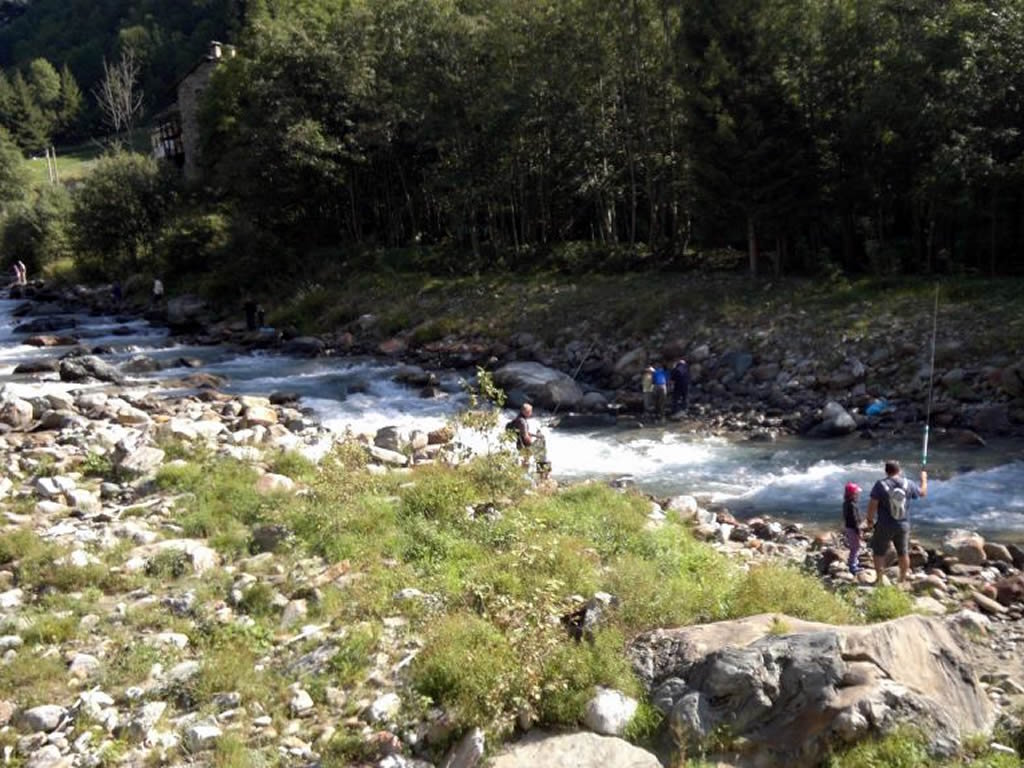
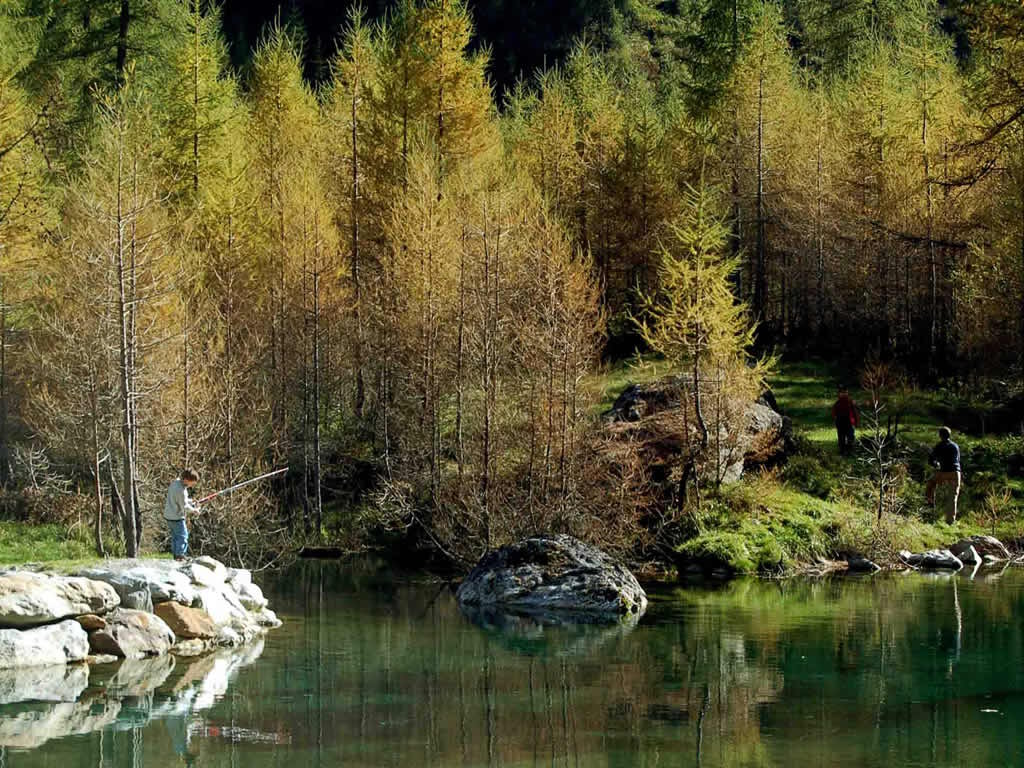






Did you know that in Alagna, winter never ends and the lifts operate every day until 14 April?
In April, the ski pass has advantageous prices, the slopes are still perfect and there are no queues. But above all, spring snow opens the door to ski mountaineering, which can caress our mountains with delicate passion. Ski mountaineering is pure, stylish and green, and in Alagna it has endless possibilities.
Spring is the perfect season for skiing while respecting the environment! Moreover, climate change is getting us used to increasingly late and abundant snowfalls.
In spring, the High Altitude Refuges open, advanced base camps for all climbs on Monte Rosa.
150 years of mountaineering stories, adventures and dreams. But they are years well-spent!
Would you like to see the sunset from the 3647 metres of the Capanna Gnifetti?
Forget the itchy old wool blankets, candle butts and the usual soup served on plastic plates! The Monterosa refuges are state-of-the-art with all the comforts; duvets, hot showers, menus worthy of the best restaurants and, for the health of the planet on which we all live, all plastic free! No plastic and, less plastic, less rubbish. Less rubbish, fewer helicopter trips, less pollution and so on!
Monte Rosa Refuges We love you!
Have you ever seen a core drill of a glacier? (as CNR glacier scientists usually do in the summer) it's amazing how well you can see the deposits that have formed over the years and understand a lot about climate change, drought years and glaciation years at a glance.
Interesting, isn't it?
In Alagna we joined the Caravan of Ice Project and also the Paw Project (Protect our Winter)
And we want to raise awareness among our guests:
We offer reusable water bottles to those who visit us. You will find them soon.
The restaurateurs have reduced costs for the Pure Water tappers known as 'del Sindaco' because in Alagna we really don't like disposable bottles!
We played easy with water because we have plenty of it here; every hamlet has its own bubbling fountain and so does every mountain pasture. But not because we have plenty of water, we don't like to waste it and especially pollute it!
The Sesia? Our river, which in Alagna is just beginning its long adventure, here is crystal clear and bubbling and is part of our culture and its waterfalls and cascades are our background music. We cherish our river!
In its waters, fishing is allowed, which begins in spring (the Tourist Fishing Section opens on 25 April).
HERE you will find all the details.
You can catch many varieties of trout, but the most common, typical of Alpine areas, is the Fario trout, tasty in carpione with vinegar and various herbs or baked with potatoes. But there are also those who eat it with polenta and swear it is the perfect combination.
These are traditional recipes, part of the history and culture of Alagna. Foods of a peasant population that has always fed itself on what the land offered it. Without plundering, but in a continuous exchange of peaceful coexistence.
The people of Alagna have always taken care of their land and have cultivated, reclaimed and carefully tended each side of the mountain for centuries, building fields bordered by walls and connected by stone stairs that are a spectacle for the eyes and a masterpiece of craftsmanship.
In 2024, the municipality will be redeveloping, in collaboration with the Symbiosis project, this architectural marvel that is now in danger of becoming a forest again.
Stay tuned, we will inform you about the progress of the project!

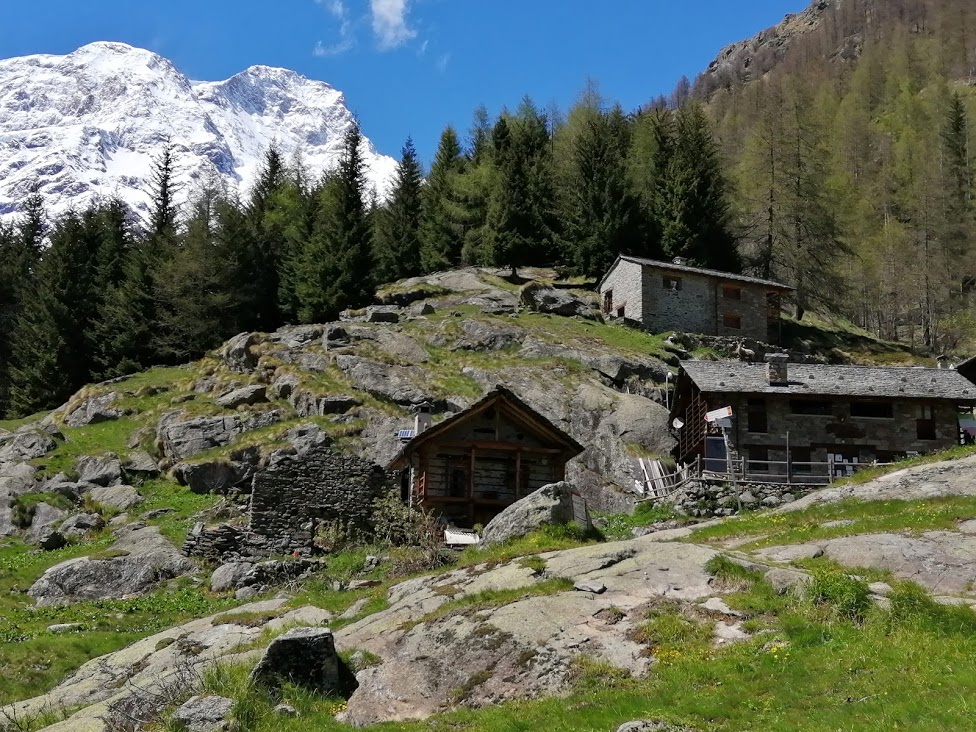







31 March Easter, the smell of spring, birds singing and flowers already sprouting even in Alagna, but we still feel like skiing! Read our proposals to enter the warm season in perfect shape! The Monterosa ski resort is open until 14 April!
Set off on a breathtaking descent from Passo dei Salati, all the way down the Vallone d'Olen, a black slope, but what a fun ride!
Stop in Pianalunga for a drink at the Alpenstop and then down again to the Grande Halte at Mimmo's, and finally a pit stop at the Wittine DerShoppf is a must!
Still not satisfied? You can take the gondola again and from the Passo dei Salati do some legwork towards Gressoney and Champoluc!
Do you like skiing but the scent of spring and the first green grass drags you towards paths that are already passable?
We have what you're looking for… if you want to breathe deeply and admire the beauty of the Walser hamlets, we'll take you for a walk in Valle Vogna where time has stood still. As you walk along the beautiful sunny path of the high hamlets, you can wander among old stone walls and majestic wooden beams, come across small glimpses of daily life and stumble across flocks of goats scattered here and there.
You are in Alagna and you cannot miss the walk to the Rifugio Pastore!
We are in the Alta Valsesia Natural Park area and the ibexes are its guardians. With circumspect eyes, they will lead you up to Rifugio Pastore, towering above the majestic south face of Monte Rosa. Spectacular views guaranteed!
Scattered patches of snow will make the spring air crisp, but after the exertion of the route, the hut kitchen is a due reward!
Oh, I forgot, you are in the presence of Her Majesty the Queen, the Capanna Margherita, so don't forget to bring a good pair of binoculars!
If the trail permits, a ride to the Zar Senni refuge in the Otro valley is a must.
Once you arrive at your destination, you will be left speechless, what can you say about such marvels?
The little white church, the refuge, 4/5 hamlets, the oldest ones to be visited… what more could you want? We expect lots of photos here
If you want to work your muscles in the gym, you have to go! Our climbing gym is indoor and you will be welcomed by our Guide Corps. Simple routes, complex routes, there's something for everyone! For ice cream flavours, on the other hand, you will find the Der Gourner bakery next door!
If you want to become an armourer, you must land in Alagna!
For times and lessons have a look here
We won't forget you river pirates, but we can't make it by Easter!
We have to wait a little longer, but for those who want to here we have all the contacts!
We are well versed in culture, so to keep your mind sharp we take you on a tour of our Walser Museum in Pedemonte. On 30-31 March and 1 April, a visit to the museum is recommended. Casa Daverio next door is also worth a look.
Here all the timetables and some more info!
If you didn't arrive breathless, then you have room to sip an excellent aperitif in our bars, from the most extravagant cocktails to our infamous Genepy … and as a final reward for this 'fit Easter' enjoy a nice gargantuan dinner in one of our typical restaurants!
If you feel satisfied, we look forward to seeing you in the summer, here you will find everything you need for your next SUMMER IN SHAPE!













Today we want to tell you about our dinner at high altitude.
Having decided to participate in the Dinner at High Altitude event at 2000 m, after contacting the structure, in this case the Alpenstop restaurant in Pianalunga, we boarded the cable car.
To be perfectly honest, the manager kindly invited us, but that is the practice.
If you have never seen Alagna at night from above, with its beautifully lit rooftops, you absolutely must try it.
Not to mention the winter sky visible from Pianalunga, it seems you can touch the stars!
Waiting for us was Luca Monfrini, the manager, a young entrepreneur who chose to leave the city to live in the mountains, which, with good food, is one of his strongest passions.
The evening's menu is entirely dedicated to Illy Coffee, skilfully used by Chef Corrado Resini to embellish the dishes ( the Chef is truly well-rounded, and beyond the theme evenings, he will always propose a wide variety of curious dishes ).
We are offered an aperitif that is by no means trivial, a tartare served in a cappuccino cup enriched with coffee powder paired with a good glass of prosecco.
We continue the evening tasting a fantastic risotto, a delicate wild boar dish and a sublime dessert. All accompanied by the detailed account of Davide Vialardi, agent of Illy Caffè. Trying new combinations, we are more aware that today's coffee cultivation is absolutely sustainable, so we feel more involved in the well-being of the planet.
We tried this hut, but Grand Halte and Wittine Der Shoppf are also part of the 'Dinners at High Altitude' offer at 2000 m.
All the huts mentioned above are located along the ski slopes.
Contact them to find out about their culinary menus!












Attraverso questo video “Vogliamo raccontarvi la storia di un’antica montagna di ghiaccio. Nessuno tra gli uomini sa dire quando sia venuta al mondo ma le rocce più antiche, si narra, abbiano 300 milioni di anni”.
Nel cuore delle Alpi, "Terra Nostra "rivela l'essenza della cultura Walser di Alagna Valsesia. Un viaggio attraverso la storia e le tradizioni accompagnato dalla regia sensibile di Chiara Guglielmina che, con Eterno prima e ora con Terra Nostra, cerca di parlare della sua terra e della sua gente con estrema delicatezza e poesia. Un inno alle origini Walser e alla loro eredità impareggiabile in questo angolo di mondo.
E' con la venuta dei Walser, popolazione germanica, che queste terre a cospetto del Monte Rosa hanno preso vita e grazie all’ utilizzo di materiali locali, legno e pietra, e mani sapienti di fini artigiani, è nato il villaggio di Alagna.
Poche case, prima sui pendii, ben esposte al sole, poi divenute villaggi, piccoli dorf completamente autosufficienti.
Sono passati 8oo anni e Alagna mostra ancora le sue origini e le sue tradizioni.
Le case delle frazioni, ben conservate, hanno resistito al passare degli anni e alle intemperie grazie alla loro unicità e ad alcuni accorgimenti come strutture solide con sistema a blockbau, legni resinosi in esterno, tetti in piode spioventi, la maggior parte delle case venivano costruite a ridosso l’una con l’altra per proteggersi dagli agenti atmosferici. Monterosa terra di tradizioni millenarie
Ci trovate alle fontane frazionali, nei locali a raccontare di giornate di caccia o della trota pescata in acque d’alta quota e per questo più appetibile.
Ci trovate laddove vediamo un prato sfalciato, un muretto a secco che torna a vivere, un sentiero pulito dalla neve.
Certo, il Walser moderno, oggi, ha tutte le comodità ed ha imparato a vivere di turismo ma non dimentica il Monterosa, la sua terra e le sue tradizioni.
Il Monterosa con le sue cime che raggiungono e a volte superano i 4000 m, offre esperienze senza pari.
Per gli alpinisti l’emozione di raggiungere il punto più alto circondati da un panorama senza tempo, è pura avventura.
Durante le escursioni e le scalate, i Rifugi Monterosa offrono un punto d’appoggio e un’opportunità per ricaricare le energie.
Alagna con i suoi 1500 posti letto, 450.000 presenze, oltre 2 milioni di passaggi sugli impianti a fune, è parte del comprensorio sciistico Monterosa Ski.
200 km di piste, natura e adrenalina che si fondono in uno scenario senza eguali.
Immaginatevi di poter entrare in punta di piedi in questa nostra custodita realtà, e percepire l’armonia tra uomo e natura, tra antico e moderno che da anni cerchiamo gelosamente di preservare.
Benvenuti nella Nostra Terra!
Passa a trovarci, ci trovi qui









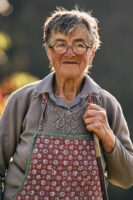




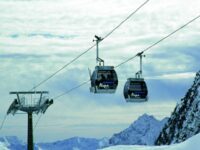



IL MONDO LEGGENDARIO DI ALAGNA
Alagna è famosa per la sua ricca tradizione culturale e storica, e le leggende Walser sono un elemento importante della cultura locale. I Walser si vantavano di saper leggere i destini nei fatti della vita quotidiana, avevano una cultura magica variegata e anelavano alla libertà di pensiero, venerando le proprie origini, in un vorticoso universo di leggende e favole e storie vere, che animavano le lunghe serate invernali e che si sono mantenute fino ad oggi.

Vi accompagnamo alla scoperta di una piccola parte di questo mondo.
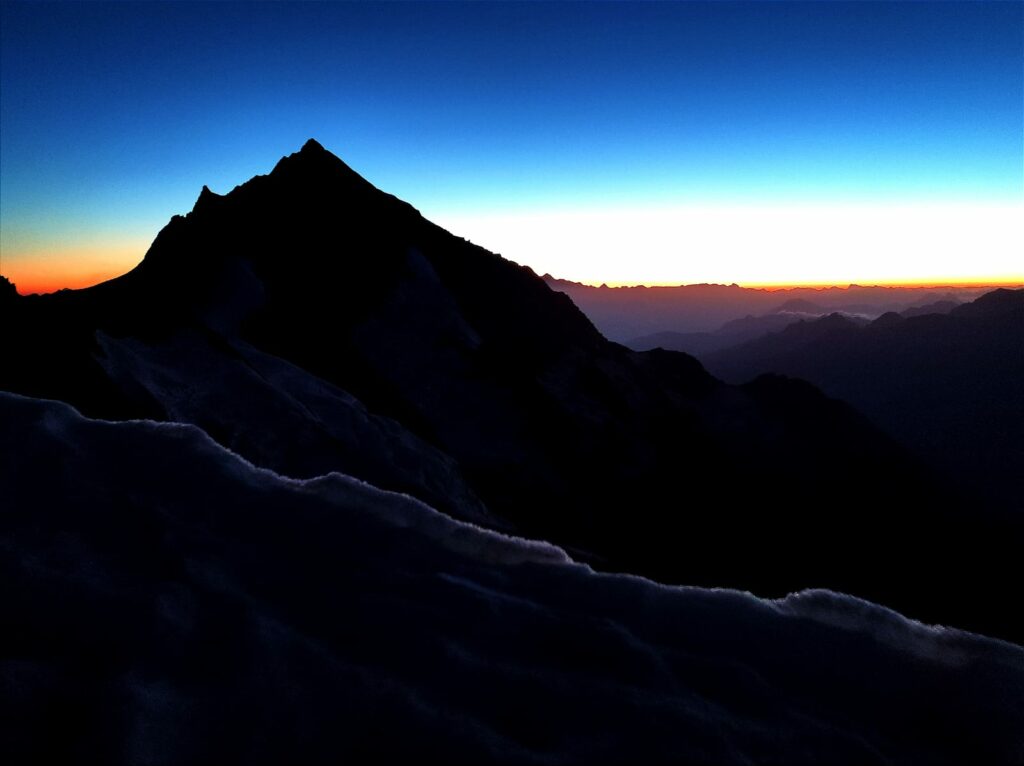
IL SENSO DELLA VITA E DELLA MORTE
Esisteva un senso di continuità tra il mondo dei vivi e quello dei morti. Molti sostenevano di percepire l’arrivo della morte attraverso vari segnali come il sentire gocciolare senza pioggia, sentire ululare la volpe, sentir bussare alla porta o vederla spalancarsi senza nessuna presenza fisica, vedere piccoli turbinii che sollevavano fieno o neve senza che vi fosse vento. Tutti presagi di morte imminente!
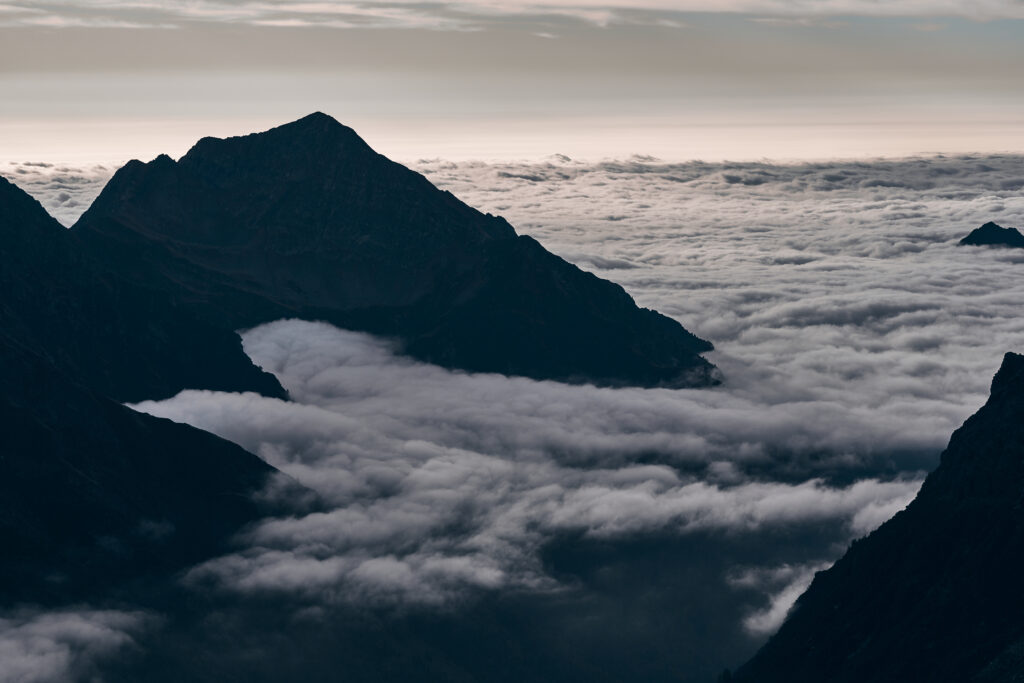
LA FINESTRELLA DELL’ANIMA
Le case erano in qualche modo già predisposte per il “passaggio” da una dimensione all’altra. La finestra dell’anima infatti era una piccola apertura costruita nella parete della stube che veniva aperta alla morte di un famigliare per liberarne l’anima diretta verso i ghiacciai del Monte Rosa. Qui doveva purgare i peccati commessi in vita. La finestra veniva poi richiusa subito dopo affinché l’anima non trovasse la via del ritorno.

LA PROCESSIONE DEI MORTI
Legata alle anime sul ghiacciaio è la processione dei morti. Si diceva, e si dice ancora, che il corteo partisse per il ghiacciaio di Bors nella notte fra il 1 e il 2 novembre. “Dal fondo dei burroni, dal letto dei torrenti, dai cimiteri delle valli del Monte Rosa, si levano i morti e si mettono in cammino verso la loro montagna. Ogni scheletro ha il dito mignolo infuocato e quel lumicino lo guida nel cammino. Se incontrano un uomo vivo lo fermano, lo fanno cavaliere e gli donano una bacchetta per dirigere la processione, così che la folla dietro a lui possa procedere rapidamente e superare ogni difficoltà. Quando trovano un burrone od un torrente, la più colpevole tra le anime dipartire si fa innanzi, allunga le braccia e le gambe fino a raggiungere la sponda opposta, facendosi ponte per gli altri. Quando le sue mani toccano l’altra riva la fila dei morti passa sullo scheletro scricchiolante e attende il passaggio della schiera. La processione raggiunge i ghiacciai prima dell’alba e lì, in penitenza, inizia l’espiazione dei peccati picchiettando il ghiacciaio con degli spilli e il suono si diffonde nelle valli”
Tali leggende non sono solo fonte di intrattenimento, ma contribuiscono anche a preservare la storia e la cultura della comunità Walser. Esse possono riguardare aspetti della vita quotidiana, credenze culturali, o spiegare l'origine di determinati luoghi o tradizioni.

"Monterosa Ski: Downhill Skiers' Paradise".
The majestic peaks of the Monte Rosa massif, in the heart of the Alps, have always been an irresistible lure for winter sports enthusiasts. Among the many activities that can be practised in this area, downhill skiing occupies a prominent place, offering unforgettable emotions to enthusiasts.
A unique snow experience: Monterosa Ski is one of the most prestigious and fascinating ski resorts in the world. Located in the enchanting region of the Pennine Alps, it offers a wide variety of ski slopes,
The Ski Slopes: One of the distinguishing features of Monterosa Ski is the vast network of ski slopes that cross the three main ski resorts: Champoluc, Gressoney, and Alagna Valsesia.


Monterosa Ski's perfectly prepared and groomed slopes offer optimal conditions for downhill skiing. Lovers of speed and adrenaline will find tracks that meet their expectations, while those who prefer a more leisurely descent can enjoy the panoramic slopes that offer spectacular views of Monte Rosa and the surrounding area.
From ski lessons for beginners to state-of-the-art equipment shops, there is something for everyone. In addition, the refuges on the slopes offer an ideal opportunity to sample the local cuisine and refresh yourself between descents.
Monterosa Ski confirms itself as an unmissable destination for downhill ski lovers.
Want to know the situation on the slopes in real time?
The webcams offer a virtual window on the beauty of the mountain and represent an invaluable tool for winter sports enthusiasts, hikers and all those wishing to explore the wonders of Alpine nature. These devices allow you to get a real-time view of weather conditions, visibility and piste activity, providing useful information for planning your activities in the mountains.


Tastes of the Mountains: A Gastronomic Journey through High-Altitude Dishes
The mountain regions of the world not only offer breathtaking views and fresh, clean air, but also a rich culinary tradition. Typical mountain dishes often feature local, robust and nutritious ingredients that meet the needs of residents living in sometimes adverse environments. In this gastronomic journey through the peaks of the world, we will explore some of the typical dishes that characterise Alagnese cuisine. The recipes are, in part, taken from the publication:” Valli del Rosa in cucina” by Idea Editrice.
Low-fat diet forbidden!
D'LAND TURTA - ALAGNA CAKE
Ingredients for 10 persons:
Wheat flour g.150; cream dl 4; butter g 150; caster sugar g 100; red wine dl 5; eggs n 4; corn flour g 80; milk dl 2; yeast g 6; salami g 50; toma cheese g 50; apples g 300; dried figs g 100; sultanas g 100.
The cake was only made in winter because milk produced in the first few days after the cow had calved was needed to make it. As this milk heated up, it coagulated, allowing the cake to remain soft. It was then baked for a few minutes on a tripod and then placed inside covered with embers.
Preparation
Mix the flours evenly. Prepare the toppings: the sausage blanched and cut into small pieces, the cheese cubed as well as the figs and apples. In a bowl, now combine the eggs, part of the milk, add the flours, mixing to obtain a homogeneous mixture without lumps; continue until all the ingredients have been used up (the yeast must be diluted in the water, while the butter must be added at the end, just before adding the toppings). The mixture obtained should have a soft consistency. Now pour it into a non-stick pastry mould (or into a container that must in any case be buttered and floured) and place it in the oven at a temperature of 180°c for at least 20 minutes






MILIJENTSCHA - MIACCE
Millijentscha miacce, millet wafers? Possibly, probably referring perhaps to the fact that the main ingredient was millet
The first document that mention Miacce is dated back to 1488
These are thin wafers.
Every country, every family has its own recipe but the base remains the same for everyone (flour, milk, salt). Few ingredients for a poor dish but one that has the strength to characterise the territory.
Made in the evening around the fire, they are an alternative to bread and an integral part of an important moment of aggregation. So customary as to become almost synonymous with getting together for a chat around the fire!
Preparation
Mix cream (not all schools of thought agree on this ingredient) flour and milk until the mixture is quite thick but still liquid. Pour a ladleful of the mixture onto one of the two hot plates of the miaccio irons (special irons previously heated and greased with lard are required), hold the iron over the fire. (The iron used today is composed of two discs hinged together and joined by a long handle useful for turning them over the fire without burning).
Cook the miacce on both sides and serve stuffed with salami, toma cheese, melted butter or jam.
In conclusion, typical mountain dishes offer not only a delicious gastronomic experience, but are also a window into the traditions and community life that inhabit these unique environments. Each bite tells a story of resilience, adaptation and celebration of local resources.
So, the next time you find yourself among the peaks, savour the culinary richness that only the mountains can offer
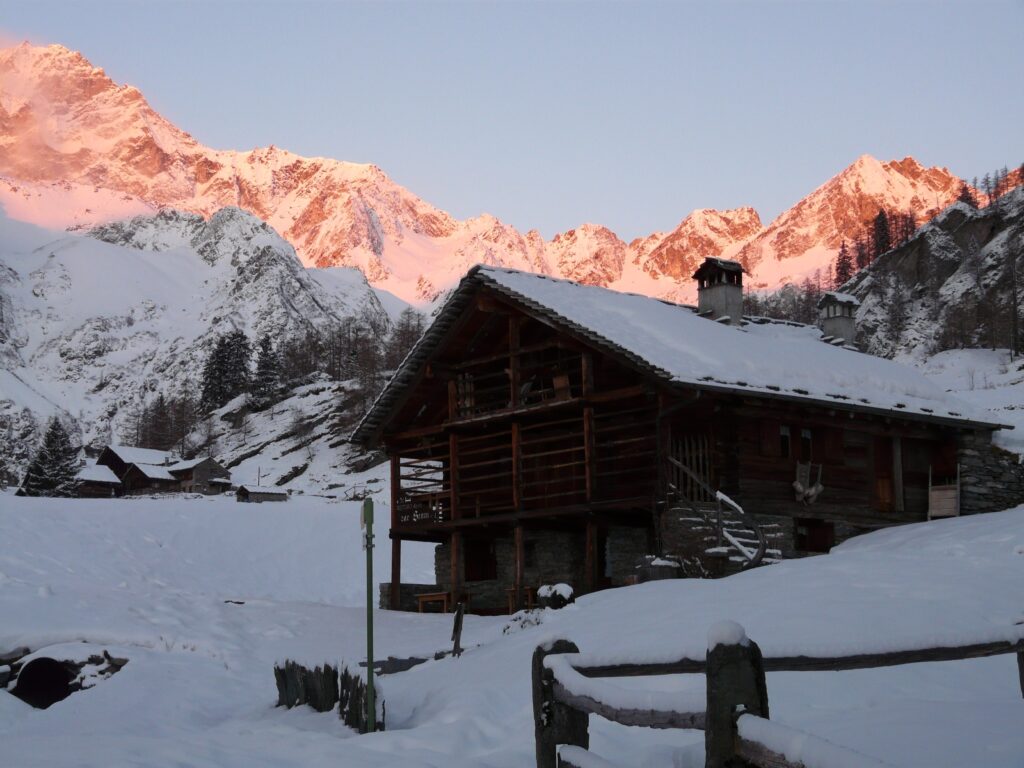
Exploring Snowy Beauty: Snowshoeing in Majestic Monterosa-Alagna Valsesia
Winter brings a unique spectacle to nature, transforming ordinary landscapes into fairytale settings. In mountain regions, such as the magnificent Alagna Valsesia, snow becomes the canvas on which nature paints its magic. An enthralling way to immerse oneself in this winter wonderland is through unforgettable snowshoe walks.
Peaceful Walks: A Relaxing Way to Explore
Snowshoe walks offer a unique and relaxing way to explore Alagna Valsesia. This activity, suitable for all levels of fitness, allows you to get close to unspoilt nature without disturbing its tranquillity. Wearing snowshoes provides safe traction on the snow, allowing visitors to traverse snow-covered paths with ease.
The region offers a variety of trails suitable for all skill levels. From wooded trails leading to breathtaking panoramic views to peaceful walks along frozen rivers, there is something for everyone. Visitors can explore the impressive snowy landscape, admiring the majesty of Monterosa from unique angles.
Recommended itineraries:
Towards the enchanting Vogna Valley


It is important to take care to ensure safety when hiking. Here are some tips for safe snowshoeing:
"Freeriding in Alagna Valsesia Monterosa"
Fresh snow sparkling in the sunlight and the feeling of freedom that only outdoor sports can provide. If you're an adrenaline enthusiast, freeriding in Alagna Valsesia Monterosa is an experience not to be missed. This unique destination, nestled among majestic peaks and breathtaking landscapes, offers the perfect environment for extreme sports lovers. Alagna is the location that, more than any other in the Monte Rosa area, has earned a reputation as a place of worship for off-piste skiing. Get thrilled in the silence of Monte Rosa, learning to appreciate the intimate and precious nature of the high mountains!


Come and explore the Freeride Paradise
Alagna Valsesia, located in the heart of the Italian Alps, is a haven for winter sports enthusiasts. Its privileged position near the massive Monte Rosa makes it an ideal starting point for those seeking the pure thrill of freeriding. Enthusiasts can access a paradise of untouched snow and thrilling slopes, in an environment that offers unique challenges and rewards.
The Allure of Unspoiled Nature
One of the most fascinating aspects of freeriding in Alagna Valsesia is the total immersion in unspoiled nature. Breathtaking panoramas and the silence of snow-covered peaks create a magical atmosphere. The sensation of being in harmony with the surrounding environment during a vertiginous descent is an experience that goes well beyond the mere practice of a sport.


Have fun in safety
Before embarking on the freeriding adventure, it's essential to consider safety. Equip yourself with the right gear (COLD-WEATHER APPROPRIATE CLOTHING, AVALANCHE BEACON, SHOVEL, PROBE, HELMET) and rely on experienced guides who know the terrain. Awareness of weather conditions and risk assessment are crucial to ensure an exhilarating and safe experience.
If you're seeking an experience that combines adrenaline with the splendor of nature, Alagna Valsesia is the place for you. A perfect mix of excitement, challenge, and beauty, this corner of the Italian Alps is ready to offer you an unforgettable adventure. Get ready to ride the peaks, feel the snow under your skis, and experience the magic of outdoor sports in one of the most captivating places in the world.
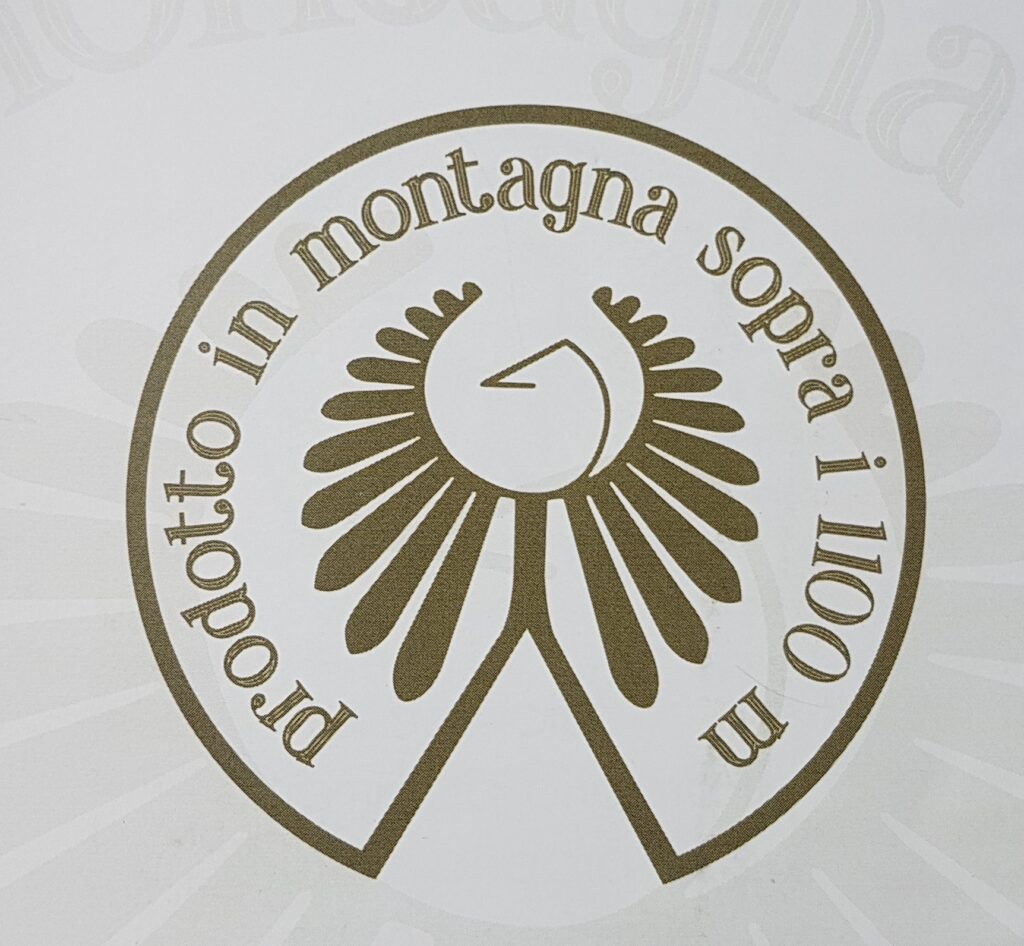
Valsesia, an enchanting region situated in the imposing Italian Alps, is famous not only for its breathtaking views but also for its rich culinary tradition rooted in the local culture. One of the area's most prized gastronomic treasures is Toma Valsesiana, a cheese with a unique, enveloping flavour.

Toma Valsesiana is a hard cheese made from cow's, goat's or sheep's milk. Its artisanal processing and careful selection of ingredients help give it a distinctive flavour that reflects the mountainous territory from which it comes. Often matured for several months, this cheese develops a complexity of aromas that conquers the palates of connoisseurs.

Alongside Toma Valsesiana, there are other typical products that contribute to the region's unique gastronomic heritage. Miacce, for example, are a type of fresh pasta made from durum wheat flour, water and salt, processed by hand and usually served with meat or cheese sauce.
Among the cured meats that delight gourmets is salami, a product that testifies to the mastery of local charcutiers. Prepared with high-quality pork and beef and flavoured with selected spices, Valsesia salami is a true culinary masterpiece.


Goat cheese, another local delicacy, adds a distinctive touch to the table. Made from fresh milk from local farms, this cheese is characterised by its creamy texture and rich, enveloping flavour.
To complete this feast for the senses, there is shepherd's butter, a product that embodies authenticity and tradition. Obtained by processing fresh milk from grazing flocks, shepherd's butter is distinguished by its creaminess and the intense flavour it imparts to simple but irresistible dishes.


Zero Kilometre Garden Produce: Freshness Guaranteed
Local vegetable gardens provide a wide range of fresh and wholesome produce, grown with love and respect for the earth. From vegetables to herbs, these zero-kilometre garden treasures feature in many local dishes. They will not only delight your palate, but also offer you the opportunity to support local agriculture.
In conclusion, Toma Valsesiana and its gastronomic companions offer a sensory journey through the history and culture of a region that has made its cuisine a true heritage to be preserved and enhanced. Each bite is an experience that brings us closer to the roots of tradition, allowing us to savour the authenticity of an area rich in unique flavours.

Rifugi Aperti per un'Avventura Invernale Indimenticabile


L'inverno ad Alagna Valsesia offre uno scenario magico e incontaminato, con le sue imponenti cime, boschi innevati e sentieri silenziosi. Per gli amanti della natura e dell'avventura, i rifugi accoglienti aperti in inverno offrono un luogo caloroso e ristoratore.
Rifugi Aperti in Inverno: Oasi di Calore e Gusto
Durante le avventure in passeggiata, è fondamentale avere la certezza di trovare rifugi aperti che offrano cibo delizioso e un'accoglienza calorosa. Alagna Valsesia vanta una selezione di rifugi che rimangono aperti anche nella stagione invernale, pronti a soddisfare le esigenze dei visitatori affamati e desiderosi di ristoro.
Uno di questi rifugi è il Rifugio Pastore, situato lungo il percorso verso il Monte Rosa. Con il suo menu ricco di piatti tradizionali della zona e l'atmosfera accogliente, il rifugio rappresenta una tappa imperdibile per chiunque desideri assaporare la cucina locale e godere di una sosta rigenerante.
Il piccolo punto di ristoro incastonato nella magica Valle d’Otro, Zar Senni in lingua walser “alla latteria” ,offre una calda ospitalità presentando una varietà di prodotti locali, ricavati dall’allevamento delle numerose mandrie, che durante l’estate pascolano i fertili prati dei diversi villaggi.
Ivana e la sua famiglia, alagnesi “doc”, accolgono i turisti e gli escursionisti con una cucina genuina a base di ghiotte polente accompagnate da salami e formaggi tutti naturalmente DECO.
Tutto questo ripaga ampiamente la fatica del cammino per raggiungere il Rifugio! Ci si arriva solo a piedi da Alagna percorrendo una bella mulattiera in salita!

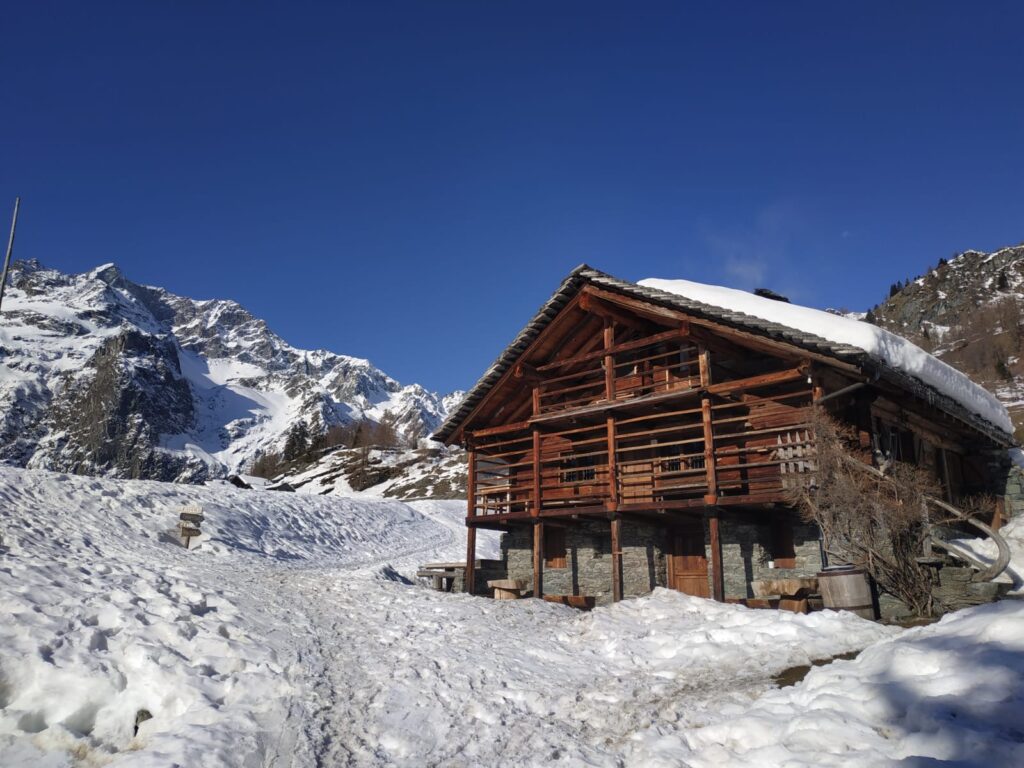



L'agriturismo EDELWEISS in frazione Peccia, due piccole stanze in una baita nel centro del piccolo borgo.
Flavia e la sua famiglia gestiscono in alcuni periodi dell'anno questa piccola trattoria dove troverete ottima cucina tipica servita all'interno e, con la bella stagione, anche all'esterno.
I posti sono pochi...telefonate per accertarvi dell'apertura e della disponibilità dei posti.
Vi consigliamo tutto...ma in particolare il cervo in umido con la polenta e le more alla grappa.

The Walser Museum in Alagna Valsesia is a place that captures the essence of the Walser community's daily life over the centuries.
The House:
In the Pedemonte hamlet, the Walser Museum has been set up in an ancient building dating back to 1628, offering a close look at the Walser architectural system in Alagna. The structure combines dwelling and stable under the same roof, utilizing animal warmth: the base consists of squared and overlapping stones, wedged into the natural slope of the terrain, providing shelter from winds and frost. The upper framework is made of large larch logs, ax-squared, properly seasoned, horizontally arranged and interlocked without the use of nails (Blockbau). This part rises to the roof covered with "Piode" or flat stone "Beole." The entire construction is surrounded, on three sides, by a covered walkway formed by wooden pillars and horizontal beams, where hay and cereals could be spread out to air and dry, sheltered from rain.




The Floors:
In the basement, you'll find the stable ("Godu") with stone slab flooring, the adjoining living area ("Stand") communicating with it, featuring wooden flooring, the kitchen ("Firhus") with cooking tools, the room for milk processing, and the area for preparing yarns and hemp weaving. The sleeping quarters, tiny and very low to conserve heat, were located on the raised floor, and the beds were mostly filled with dried beech leaves. The attic served as a storage, barn, and pantry.
The Exhibitions:
The exhibitions are carefully curated to provide visitors with an engaging and informative experience. Among the displayed items are traditional clothing, household tools, agricultural implements, and artisanal artifacts, all meticulously selected to narrate the history of this mountain community.
The Hamlets:
The Walser Museum is situated in a typical Walser settlement, self-sufficient and decentralized in scattered, small hamlets. Grouped around the community's religious protector, the few families collectively use the oven, mill, and fountain; the latter is a stone monolith often carved into two or three basins to prevent the promiscuous use of water among humans, animals, and for laundry. The chosen settlement location is always healthy and safe from landslides and avalanches. The buildings in Walser villages are consistently oriented in the same direction (the main front facing south and a wall to the north) to ensure good ventilation and maximum exposure to the sun, allowing hay or cereals placed on the lofts to make the most of its rays.
For those seeking a deeper perspective on the roots of Alagna Valsesia and wishing to better understand the historical and cultural context of the Alps, a visit to this museum is a crucial step!

When planning a day in the mountains, it's important to know where to refresh yourself! Whether you want to eat polenta or simply enjoy a mulled wine, here is the list of structures you can find open in the area.
A must-stop at:

Descending along the slope, just before reaching the village, a small detour to the Walser Fum Diss village is recommended; welcoming you is Mama Jucci of the eponymous farmhouse with products from her farm and the pulsating heart of ancient tradition. Anecdotes, tears, and laughter accompany simple dishes with an ancient flavor
On December 30th, Alagna Valsesia is getting ready to host an extraordinary evening filled with tradition, flavor, and entertainment. The event, organized by Al Grup with the support of the Municipality of Alagna Valsesia and ATL Terre dell’Alto Piemonte.
A Day Dedicated to Walser Tradition
Throughout the day, the folkloric group Die Walser Im Land will take center stage, preparing miacci, mulled wine, and hot chocolate, delighting attendees with authentic local delicacies. In Piazza Grober, the bustling heart of the village, the atmosphere will be lively thanks to the group's entertainment, creating an engaging experience for everyone.
]



Thrilling Footage of Activities in Alta Valsesia
As darkness falls, starting from 5 PM, it will be time to immerse oneself in the evocative atmospheres of Alta Valsesia through the screening of exciting footage. It will be a unique opportunity to discover the natural beauty and activities that make this mountainous region truly special.
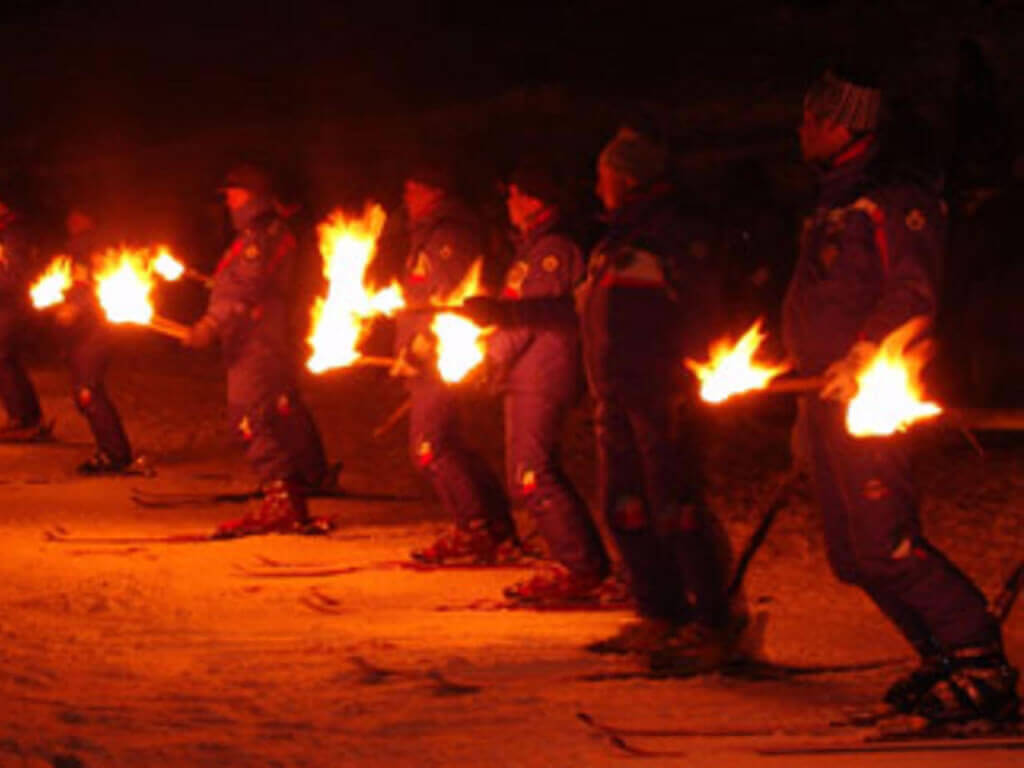
Torchlight Parade by Ski Instructors and Lighting of the Bonfire
At 9 PM, the evening will take a magical turn with a torchlight parade by ski instructors, illuminating the night with dancing lights and winter enchantment. The event will culminate with the lighting of a majestic bonfire, a symbol of warmth and conviviality.
Radio Valsesia DJ Set and Music under the Stars
From 9 PM to 11 PM, the square will transform into an open-air dance floor, thanks to the engaging DJ Set by Radio Valsesia. It will be the perfect opportunity to conclude the evening under the starry sky, dancing and enjoying the music that will accompany the final moments of the year.
The event on December 30th in Alagna Valsesia promises to be an engaging and festive experience.
In the heart of the majestic peaks of Monte Rosa, amid snowy landscapes, ancient forests, and old hamlets with wooden houses, lie the captivating Christmas traditions of the Walser people, steeped in authenticity. Their presence in the mountains has been crucial for the creation of traditions imbued with authenticity and deep meaning.
The day of Saint Stephen holds great importance in local history. Not only because it immediately follows Christmas and commemorates devotion to the first martyr, Saint Stephen, but also because, according to the Alagna tradition, it somehow reveals the altars of love! In 1840, Giovanni Giordani wrote to his friend, the theologian Farinetti: "In Alagna, the distribution of sacks has already begun, one given by Stafe Bartoli to Pietro Ferraris, another by one of Ruchlo's daughters to the youngest of the Malber brothers..." It was apparently a tradition for women to give a sack to their betrothed, symbolic of "I put you in the sack"? This took place around the time of this celebration.

The "delivery" of the sacks took place during a long-standing private house party. With the construction of the theater, the celebration shifted. Since the early 1900s, we know for sure that the festivities took place at the Union Alagnese theater with "The Youth Ball."
"Saint Stephen. Mainly a youth dance; dark attire was mandatory, preferably black for men, and white dress with an apron for the girls. During the evening, those close to marriage and the 'filarini' who wanted to keep their relationship hidden were targeted. Two young men with a hidden rope roamed the hall, and, picking a couple, quickly threw the rope around them, tying them as tightly as possible to make them noticed by all. In the next round, the young men with the rope were different, to avoid arousing suspicion among other suitors" from ALAGNA UNA COMUNITA’ WALSER.
The Folkloric Group "Die Walser Im Land" has created a dance to commemorate this tradition (Gürtil tanz). The Saint Stephen dance continues to be part of the local tradition that renews itself each year. The "young men with a rope" may be missing, but the story continues.
On January 5th, the "Eve of Epiphany": girls gathered in groups for a vigil, made highly salty migliacci to feel the thirst stimulus during sleep because, near the fountain where the girl would quench her thirst in her dream, she would find her future spouse. Also, on the evening of January 5th, it is recommended to place a bowl of water on the windowsill, which, freezing, will form the pattern of the future spouse's profession tools, according to ALAGNA UNA COMUNITA’ WALSER.
Centuries-old traditions, all centered around women. However, if you're not in the least interested in a future spouse or are already "settled," you can still try... something will happen!
The Christmas traditions of the Walser represent a cultural treasure that adds a unique touch to the festivities. Immersed in their ancient practices, the Walser teach us the importance of community, sharing, and respect for nature. If you're looking for an authentic way to spend the Christmas season, come among the peaks of Our Mountain and let yourself be enchanted by the magic of a Christmas that preserves its roots in the past and projects into the future. We await you!
Here we are in December! The season has begun! What do we offer in Alagna?
• Ice skating: open from December 8th
• Dinners and tastings at high
.
Theater Events:
The Unione Alagnese Theater is the expression of the territory, a stage for special events that celebrate local culture. The unique atmosphere of the theater will enchant you. There are book presentations about the mountains, performances by the folk group Die Walser Im land, a "Nadal" concert with music from the alpine Christmas tradition, etc.


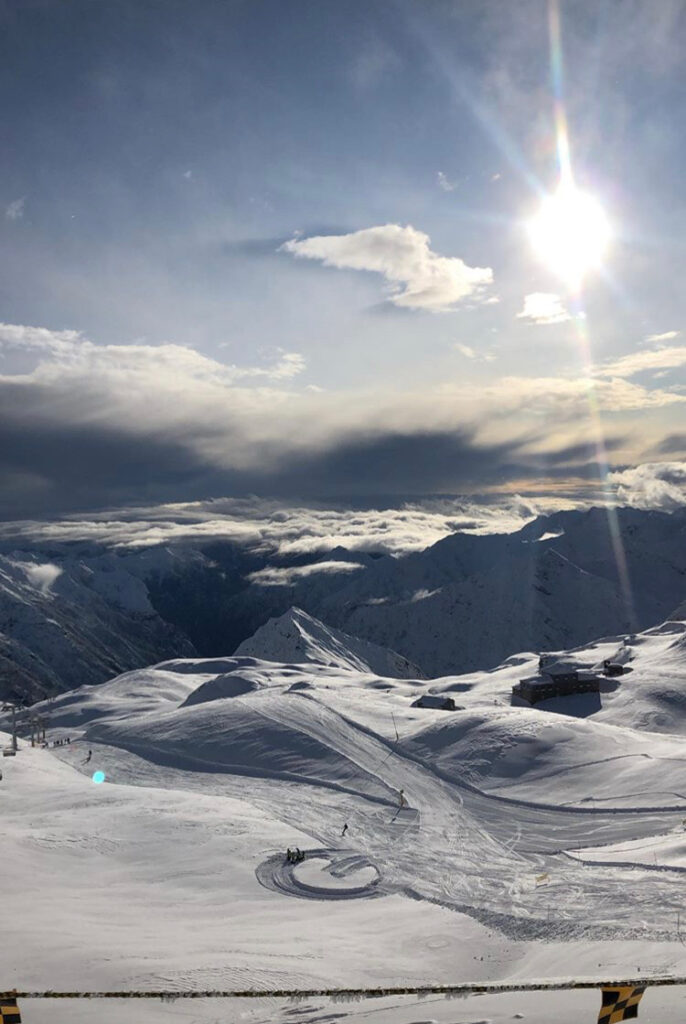
Visits and Accompaniments:
For those who decide to take a break from skiing and want to get to know Alagna, we have a schedule of guided tours during the Christmas holidays that will include:

Happy December 30th! (No, it's not a wrong date)
To conclude on December 30th, everyone gathers in the square with miacci, mulled wine, and entertainment in Grober Square by the folk group Die Walser Im land. In the evening, the most anticipated moment arrives with the torchlight parade of ski instructors and mountain guides amid play of light and music... The celebration continues with an event organized by Radio Valsesia.
Alagna Valsesia offers an experience that skillfully blends the past with the present. Guided tours and theater events are opportunities to experience culture and tradition authentically, transporting you to a world where the beauty of the mountains merges with the rich history of a community that has preserved its roots.
Include these moments in your vacation to live a complete and engaging experience. You will discover a side of Alagna that goes beyond the mountain landscape, revealing the pulsating heart of a community rich in history and tradition.

Christmas shopping is not one of my strong suits, and I would gladly avoid the 80x80m2 changing rooms where you have to remove 3 layers of clothing just to try on one! I hate crowded places and after a stressful autumn I really need to wind down. I work on the PC and as always, I check out google, uncertain whether to click on the “I’m feeling lucky” button on the homepage or do a search for a personalised destination. Opting for the second choice, I type in “slow weekend” which, in a way, is my motto and it leads me to alagna.it.
It is not a winter destination I am familiar with for a weekend in the mountains but one look at the wooden chalets and snow, and I immediately fall in love. But what strikes me is a close up of a small village taken by a drone; this is how my weekend in Alagna begins. Now, let me tell you a story.
Of all the places in the mountains to visit for a weekend in the snow, I had yet to experience Alagna and I chose the location for the name: Relais Regina in the hamlet Ca’ d’Janzo in the Vogna valley.

Imagine a charming hotel immersed in the snow, where roe deer, deer and chamois are a familiar presence. I discovered that Queen Margherita of Savoy stayed there in 1898 and I immediately felt like a princess. My breakfasts were served in a restaurant where the atmosphere of that era remains intact, and no doubt, I would be on the look-out for lingering memories. My nights on the other hand, were spent in the comfort of the modern bio-architecture of the Perello bedrooms!
The FIRST DAY was a surprise: Alagna has magnificent wooden houses, unique architecture that is so harmonious it seems unreal. There are cobbled streets and monolithic fountains everywhere. The Walser villages are really cozy and welcoming, and life flows slowly and relaxed. I wandered aimlessly through alleys and meadows. In the main square, my attention was drawn to the restaurant Ca’ Nosta. A name that certainly sounds like a guarantee, I think. And so, it is! My first dinner in Alagna was just perfect. Armando welcomed me like family and made me taste the most delicious Gattinara Travaglini. I might be banal, but a warm and fragrant polenta concia revived my smile (which was frozen in the cold!)

On DAY TWO the glare of the sun on the snow dragged me out of bed early in the morning. I decided to explore the Vogna valley on snowshoes. My walk started from the hamlet of Sant’Antonio, a gentle uphill to the hamlet of Peccia and the bridge, which is called "Napoleonic" in this area. From there, I decided to continue on a hiking path that is a little steeper; a chance to walk off my dinner! The hike made me short of breath, but I quickly reached the hamlet Montata, walked past it and found myself in a beautiful larch grove where the snow was bathed in yellow sunlight. I continued to snowshoe up to the road sign for Larecchio and decided to follow the deviation. After 15 minutes, the trail lead me to a splendid meadow where the snow was untouched and the only sound was the soft gurgling of a stream flowing across the plain.





Just me, the snow, and a few Walser huts. I was filled with wonder and awe! Two and a half hours of hiking to reach 1895m, a little tiring, but well worth the effort!
I returned to the hotel completely satisfied and I allowed myself to be pampered in a sauna with spectacular views of the mountains at the Spa in Relais Regina. I relaxed in my surroundings while waiting for Giuliano, the hotel’s trusted taxi driver, who took me to Alagna town centre for dinner. Jennifer, Relais Regina’s receptionist, booked a table for me at the restaurant Edelweiss, promising me a meal fit for a queen and I blindly put my trust in her.
At Edelweiss I met the manager Graziano, born and raised in Alagna and I asked him to recommend some local dishes. I tasted the capuneit, typical Valsesian roulades with a filling of meat and milk-soaked bread, a fragrant stew of mixed meats served with the typical “green” sauce and fruit mostarda, a candied fruit condiment and a glass of Ghemme from the Cantaloupe “Signore di Bayard” cellar. Need I say more? I didn't want to leave anymore.
THIRD day: By now I felt at home at Relais Regina. I thought of Sibilla Aleramo who spent a whole summer in this Relais in 1916. My thoughts bounced from Giovanni Cena, Pellizza to Volpedo, Dino Campana and her, the femme fatale of the 900s as I walked along the Sesia, on a track called Schenine (the beautiful places in Walser) that faces Monte Rosa. The cold air and my walk made me feel like drinking a heart-warming hot chocolate to lighten my thoughts and after leaving the historical gossip behind me, I entered the pastry shop der Gourner where I discovered a world of sweet desserts. Of all the places to visit, I just couldn’t skip this one.

Pietro Stainer, chef by family tradition and pastry chef for passion prepared me a plate with tasty bite-sized samples of "Salam d'Alagna", chocolate salami with dried fruit, walnuts, hazelnuts, almonds, figs, and dates, a mouthful of flavour and energy, produced only in winter to retain the "freshness" of the chocolate. He also gave me Pastiera Valsesiana which is made with sheep's milk ricotta and left to rest overnight with sugar, saleggia (wild thyme) and blueberry jam, for a mix of true mountain flavours, excellent quality of traditional and modern pastry expertise. Pietro is a true artisan!
And after satisfying my tastebuds, he told me about Capanna Margherita, the highest refuge in Europe, which I did not know about. The name Margherita is in honor of the queen whose traces I was following. It is perched at 4554 m on the Gnifetti peak and is a coveted climbing route by mountaineers from all over the world. At first, I thought he was teasing me, describing it as: a hut clinging to a 1000 m rock face with a restaurant, 70 beds, with a Uni En ISO 14001 quality certification, internet connection, a library, and a 360 degree view of the surrounding mountain splendour. But then he showed me a picture and now I have an objective: training to go hiking! Next summer the hike to Capanna Margherita will be at the top of my to do list. And Alagna will be my weekend destination in the mountains in both summer and winter.





Alagna surprised me, pampered me, caressed me, and gave me a dream to realize. I can say with certainty that my long weekend in Alagna was simply amazing!

